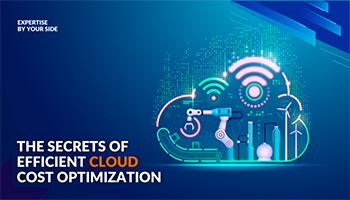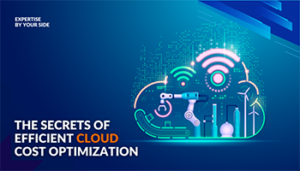The cloud offers businesses unmatched agility, scalability, and accessibility. However, the open-ended nature of cloud billing can lead to unexpected costs. Cost Optimization in the Cloud expenses is crucial for maximizing the value you get from your cloud investment. This blog will guide you through various strategies to save money on cloud services.
Understand Your Cloud Bill
The first step towards cost optimization is gaining a clear understanding of your cloud expenses. Analyze your cloud bills to identify areas of overspending and underutilized resources. Understand the pricing models offered by your cloud provider and explore cost-saving options like reserved instances and spot instances.
Implement Continuous Monitoring
Set up automated tools to monitor your cloud usage in real-time. This allows you to identify idle resources, inefficient workloads, and unexpected spikes in consumption. By proactively addressing these issues, you can significantly reduce your cloud spending.
Identify Unused and Unattached Resources
Unused resources like EC2 instances, storage volumes, and unused IP addresses continue to accrue charges. Regularly review your cloud resources and identify any unused items. Remove or terminate them to free up resources and optimize your spending.
Right-Size Your Resources
Choose the right resource size for your workloads. Overprovisioning resources leads to wasted spend, while under-provisioning can impact performance. Monitor resource utilization and analyze historical usage data to determine the optimal resource size for each workload.
Utilize Auto-Scaling
Auto-scaling automatically adjusts your cloud resources based on demand. This ensures you have enough resources to handle peak loads without paying for idle resources during periods of low activity. Most cloud providers offer auto-scaling features for various services.
Leverage Reserved Instances
Reserved instances offer significant discounts compared to on-demand pricing in exchange for a commitment to use the resources for a specific period. If you have predictable workloads, consider using reserved instances to lock in lower rates.
Explore Spot Instances
Spot instances are unused cloud resources offered at significantly lower prices. While their availability is not guaranteed, they can be a cost-effective option for fault-tolerant workloads. Consider using spot instances for batch jobs, development environments, and other non-critical tasks.
Optimize Storage Costs
Data storage can quickly become a significant expense. Implement data lifecycle management strategies to archive or delete unnecessary data. Utilize cost-effective storage options like cold storage for infrequently accessed data.
Automate Cloud Management
Automating routine cloud management tasks can save time and money. Utilize automation tools to perform tasks like resource provisioning, scaling, and cost optimization. This reduces manual intervention and minimizes human error.
Invest in Cloud Cost Management Tools
Cloud cost management tools provide valuable insights into your cloud usage and help optimize spending. These tools offer features like cost allocation, budget management, and anomaly detection to help you identify and address cost-saving opportunities.
Conclusion
Cost optimization is an ongoing process, not a one-time event. By implementing these strategies and continuously monitoring your cloud environment, you can significantly reduce your cloud spending and maximize the return on your investment. Remember, the key lies in understanding your cloud usage, identifying optimization opportunities, and leveraging available tools and services.





